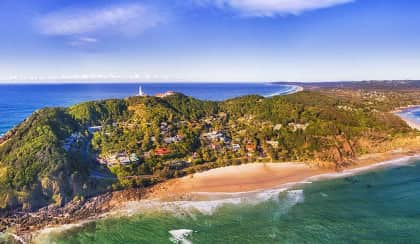Short-term v long-term rentals: Which offer better returns?
With no end in sight for the national rental crisis, a new research has revealed just how alluring the financial rewards are for landlords offering their dwellings on short-term rental accommodation sites.

According to a report by Per Capita’s Centre for Equitable Housing titled, Light as Air: Regulating Short Term Rentals in Australia, short-term rental accommodations (STRAs) are recouping the equivalent of a year’s rent on the long-term market in just 100 nights.
In some regional pockets of the nation, where the divide between median rents and STRA incomes is far greater, it takes less than a month (25 nights) to equal the median long-term rent for the year, according to the report’s findings.
While the report found short-term rentals made up just 2.3 per cent of the nation’s housing supply, it estimated that the portion of the nation’s rental market occupied by holidaymakers sits at around 7.6 per cent.
Researchers crunched the numbers from Inside Airbnb on six focus tourist regions: metropolitan Sydney and Melbourne, the NSW Northern Rivers, the NSW Mid Coast, the Mornington Peninsula, and South Australia’s Barossa Valley.
Sam Ibrahim, the report’s lead author, said the STRA’s impacts are not consistent throughout the country.
“The impact of Airbnb varies dramatically across different towns and suburbs,” he said. “Any regulations considered by local or state governments must be highly responsive to local effects and the specific needs of permanent residents.”
Regional regulatory restraints
However, even with regulation of STRA occurring across some of the country’s most popular tourist destinations such as metropolitan Sydney and Byron Bay – including rules limiting the number of nights (180) an STRA accommodation can be booked per year – Mr Ibrahim revealed compliance is not guaranteed.
“Twenty-two per cent of listings in Sydney and 21 per cent in the Byron Shire Council exceeded 180 nights booked in the year to March 2023, despite legislation restricting bookings to 180 nights in these regions,” he explained.
Centre for Equitable Housing (CEH) director, Matt Lloyd-Cape, believes Melbourne council’s recently announced efforts to better regulate short-term rentals are welcome but far from enough.
“There are roughly 9,000 short-term rentals in the City of Melbourne and 30 per cent were let for more than 180 days last year, so the new 180-day cap should reduce problems such as excessive noise and disruption for permanent residents in the city,” he said.
However, Mr Lloyd-Cape criticised the proposed $350 registration as having “little impact on the growing class of professional hosts we have identified in our research.”
With Melbourne’s average Airbnb income sitting at around $14,000 per year, he believes the fee will “only really affect those people using the platform as originally intended”.
“It won’t deter the ‘mega hosts’ with more than 10 properties,” he insisted.
The report also found 58 per cent of listings in the Mornington Peninsula and 57 per cent in the NSW Northern Rivers were booked for fewer than two months, leading it to conclude: “This may represent housing stock that is effectively vacant for most of the year”.
STRA and supply
Earlier this month, the results of Queensland’s inquiry into the effects of STRA on long-term rental markets were delivered.
Conducted by the University of Queensland with the modus operandi of uncovering the extent with which STRA is impacting the state’s housing affordability and availability, the report particularly focused on areas where private properties were leveraged on STRA platforms such as Airbnb and Stayz.
It concluded that the Sunshine State’s approximately 19,773 active short-term rentals have “limited impact on rental affordability”, offering instead that dwelling stocks are a far greater contributor to Queensland’s plummeting rental vacancy rate and subsequent rent increases.
According to CoreLogic’s most recent rental review, rents in Queensland’s capital Brisbane soared 10.3 per cent in the 12 months to July while vacancy rates dropped 1.1 per cent over the same period.
Queensland’s Deputy Premier Steven Miles believes the inquiry’s findings “emphasise the vital role of housing availability and supply in rental prices, highlighting the importance of having enough housing options for our community”.
Even with the results of Queensland’s inquiry painting a picture of STRA’s limited impact on the wider rental market, the Light as Air: Regulating Short Term Rentals in Australia report made several recommendations targeted at better regulating the short-term rental market.
These include state or territory level STRA registers, better data gathering to ensure regulators have access to the latest information about the market, and increasing council rates on homes available for year-round short-term rental.
